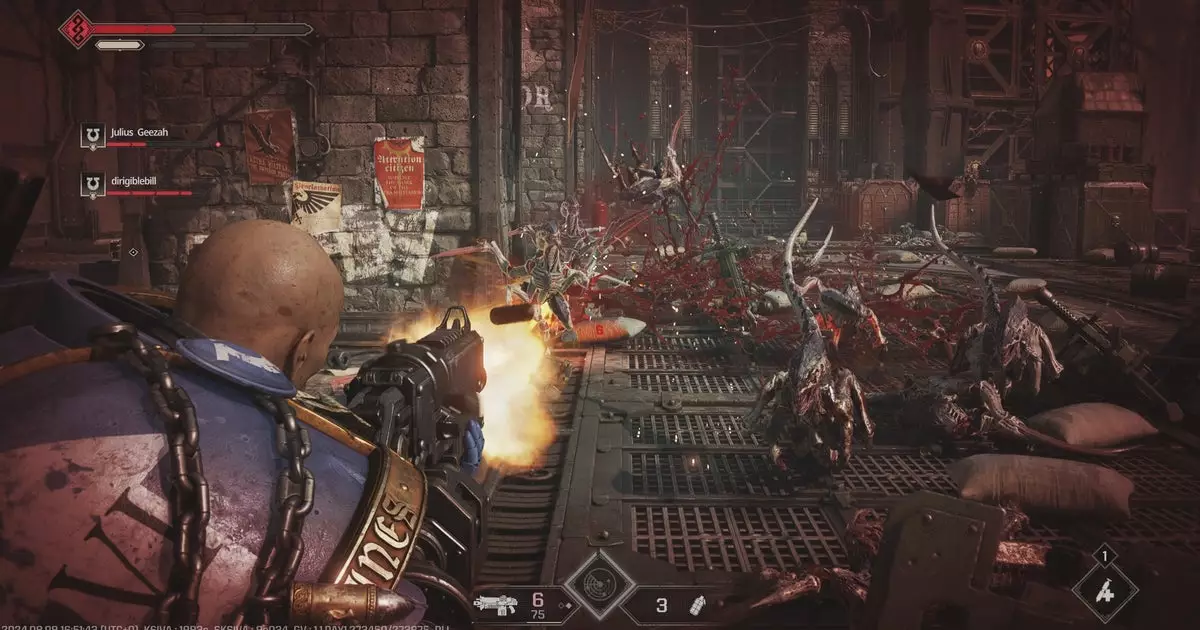In the expansive and tumultuous world of Warhammer 40,000, the forthcoming title Space Marine 2 has sparked excitement amongst fans eager to engage in epic battles against Tyranid hordes and Chaos foes. However, one significant aspect of gameplay that players won’t experience is the much-discussed PvPvE mode. Dmitry Grigorenko, the game’s director, clarified the absence of this feature, pointing to the inherent difficulties involved in merging player-versus-player and player-versus-environment gameplay mechanics.
Grigorenko describes a successful PvPvE mode as the “holy grail” of game design—a notion that many developers have pursued but few have successfully achieved. This statement highlights a broader truth in the gaming industry: balancing the interactions between human players and AI opponents is fraught with complexity. It’s not merely about crafting an experience where players can combat both their peers and the environment; it also requires a fine-tuning of the overall game dynamics to ensure that one aspect does not detrimentally overshadow the other.
The game director elaborates on the unsettling experience that can arise when players are simultaneously engaged in a struggle against AI adversaries and each other. The risk of betrayal looms large in such scenarios, leading to unpredictable gameplay that can be frustrating. After all, nothing can be more disheartening than being eliminated by an AI opponent after having just dispatched a rival player. Such chaotic interactions could tarnish the game’s user experience.
In light of these challenges, Grigorenko noted that the design direction for Space Marine 2 will deliberately keep the PvP and PvE experiences separate. This is a strategic choice that many developers have adopted, where AI enemies occupy distinctly defined areas of the map, effectively making them a controlled variable in an otherwise player-dominated environment. The temptation to merge these two dimensions can lead to a cluttered and confusing gameplay experience, which requires meticulous balancing to avoid ruining the game’s core appeal.
In the case of Space Marine 2, the focus on players engaging chiefly with each other—and not AI—in intense and frantic combat scenarios not only honors the franchise’s roots but also enhances the claustrophobic nature of the action. As players navigate tight spaces filled with enemies, the potential for backstabbing—both figuratively and literally—is integral to the experience, especially given the game’s narrative context, which celebrates themes of betrayal amongst the Space Marines.
Ultimately, Space Marine 2 appears to adhere to a clear and cohesive vision that prioritizes streamlined gameplay. While enthusiasts may lament the absence of PvPvE mechanics, the focus on intense PvP interactions within the lore-rich environments of the Warhammer universe promises to be an engaging experience. Grigorenko’s insights reveal a thoughtful approach to game design—one that spans beyond mere mechanics and delves into the philosophies that drive player engagement and satisfaction. As the anticipation builds for this upcoming title, it remains evident that the designers are committed to delivering a carefully crafted experience that respects both the franchise’s legacy and the challenges of modern game development.


Leave a Reply